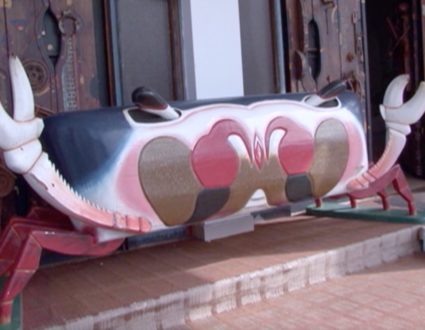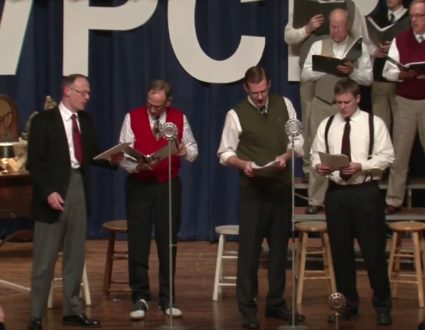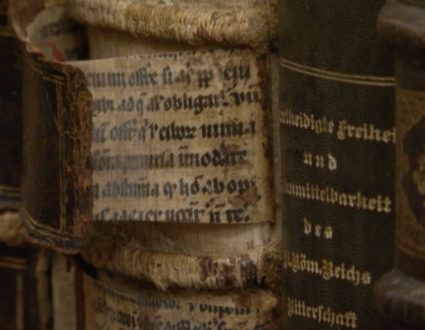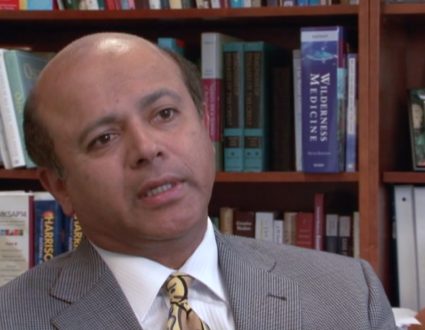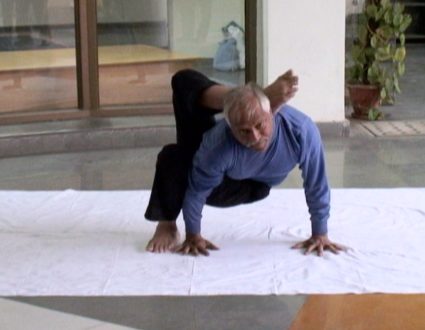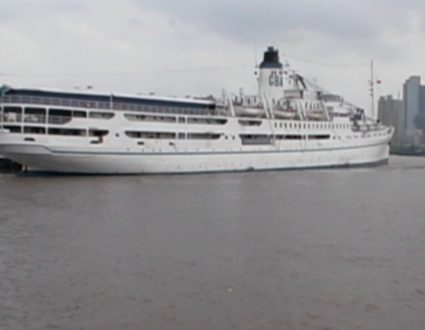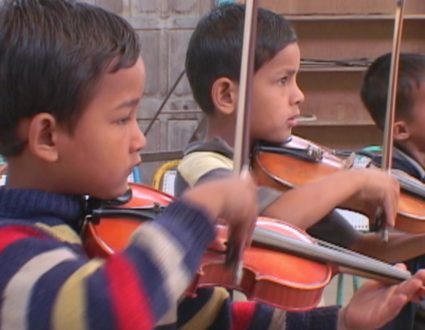Judy Woodruff:People across Europe, Israel, and the world are preparing to mark international Holocaust Remembrance Day tomorrow, commemorating the millions of European Jews killed by Nazi Germany.The day was created in 2005 by the United Nations to sustain public awareness of the genocide, which studies show has rapidly declined in recent years.Special correspondent Fred de Sam Lazaro shows us one creative attempt to educate younger generations.His story is part of our arts and culture series, Canvas.
Fred de Sam Lazaro:The pen and ink drawings are his trademark, intricate, layered with meaning in thousands of dots, dots children’s book author Peter Sis wants his readers to connect:Peter Sis, Illustrator and Author: I have almost like a third language when, between the minimal text and the picture, I can load in some symbols and things, which maybe will make you open the door or try to think about something else.
Fred de Sam Lazaro:His books have a wide demographic target, young readers to teens. Many are profiles of heroic figures in history.
Peter Sis:Galileo Galilei, who doesn’t give up, and he is a genius. And it was like, the idea was like, children among you, one of you can be Galileo Galilei.So, this is my awards storage place.
Fred de Sam Lazaro:He’s won scores of awards, including the so-called MacArthur Genius, for books that include “The Wall” about his own coming of age behind the Iron Curtain.His latest, “Nicky and Vera,” tackles a darker subject, the Holocaust, and a quiet hero, Nicholas Winton, who saved 669 mostly Jewish children from almost certain death.
Peter Sis:“As a young man, Nicky traveled all over Europe.”
Fred de Sam Lazaro:The idea came to Sis in Europe in 2009 on a visit to his native Prague, where a group of those children were retracing their long-ago train journey to England. A celebration was planned there for Winton’s 100th birthday.
Nicholas Winton, Humanitarian:It’s wonderful that it did work out so well, because, after all, history could have made it very different.
Fred de Sam Lazaro:Winton was a stockbroker in London when he heard of disturbing developments in Czechoslovakia, which had come under German occupation in the months leading up to World War II.He went to Prague, hoping to evacuate children whose parents were willing to let them go to England for what they hoped would be temporary safe haven.
Peter Sis:So, he himself immediately sets up a little office, writes the lists of the children, and manages to get trains, visas, places in England where they would stay with foster families.
Fred de Sam Lazaro:Urgency drove creativity. Sometimes, Winton faked documents or bribed Gestapo officials, doing whatever it took to get as many children out quickly before war would shutter borders.
Peter Sis:“If I bribe the train people, they will give me train. If I bribed the Gestapo person, he will be looking the other side.”So, I appreciate that he was creative in this terrible situation.
Fred de Sam Lazaro:Winton’s effort was not the only so-called kindertransport or child rescue program in the period leading up to World War II.What’s different here is that, once done, he just went on with life, and didn’t tell a soul about it.
Peter Sis:“He helped open a school. He got married. He founded an old people’s home. He never told anyone about the children.”
Fred de Sam Lazaro:Until, nearly 50 years later, when Winton’s wife, Grete, found his scrapbook in their attic, and passed it on to researchers, who tracked down some of his children.That led to a meeting on a BBC broadcast.
QUESTION:Can I ask, is there anyone in our audience tonight who owes their life to Nicholas Winton? If so, could you stand up, please?
Fred de Sam Lazaro:And it was this video that drew Sis to one of those children, Vera Gissing. And “Nicky and Vera” began to take shape.
Peter Sis:“Vera was the queen of cats.”
Fred de Sam Lazaro:Sis illustrated Vera’s idyllic life before the war, people and things she would leave behind, her parents, grandparents, horse, and, of course, her cats.But Vera’s mother feared the Nazis, and joined hundreds of desperate parents in lines outside Winton’s office in the Prague hotel. Sis draws this in muted black, white, and blue.
Peter Sis:“He took their photographs. He found train connections. Spies kept watch.”
Fred de Sam Lazaro:Three days before her 11th birthday, Vera boarded a train with 76 other children, including her sister. For almost all, it would be the last time they saw their parents.
Peter Sis:Little Vera finds a family which is very poor, but the husband says: “I cannot beat Hitler, but I can at least help one child who will survive this whole time.”
Eva Paddock, Evacuated to England: My biggest takeaway is how incredibly fortunate we were.
Fred de Sam Lazaro:Eighty-seven-year-old Eva Paddock was just 3 when she boarded the last of Winton’s trains.
Eva Paddock:First of all, that my mother would allow us to go. Giving up a child or children is amazingly difficult.It stops me right there, even now.
Fred de Sam Lazaro:Paddock was one of very few children whose parents survived the war and reunited with her in England. She moved to the U.S., and a career in education and, later, mental health care. She has no worries that Sis’ book is too dark for young children.
Eva Paddock:Every child has understood being left out of a group, being meanly treated. To me, the book, and when I talk about it, is really a message of altruism, actually.
Fred de Sam Lazaro:The book is filled with illustrations that she says encourage readers to dig deeper, even at older ages.
Eva Paddock:Children will ask questions, and then you go in their direction, and in as much depth as they can. But the story simply can’t die. And it’s going to die unless we start with children.
Fred de Sam Lazaro :Nicholas Winton died in 2015, aged 106. Vera Gissing, whose own memoirs that informed so much of Sis’ book, suffers advanced dementia. She’s 94.I reached her daughter, Nicola Gissing, in Bristol, England.Nicola Gissing, Daughter of Vera Gissing: I think, on some kind of deeper level, she realizes that there’s something about her and something’s been made, and her story’s still being told.
Fred de Sam Lazaro:A story both she and Peter Sis say is very relevant today, a time when millions of children find themselves in migrant journeys in search of safe haven.
Peter Sis:I realize these are all human beings who have dreams, who — how impossible it is for the parents. What parent would even put the children on the train and tell the children, go, you have to go now, this is the only solution to survive?All of a sudden, all these children who were crossing the borders, who were trying to live somewhere else, who were immigrants like me, it all connected.
Fred de Sam Lazaro:“Nicky and Vera” has been translated into Italian, Chinese, Korean, and starting on this International Holocaust Remembrance Day, it is available in German.For the “PBS NewsHour,” I’m Fred de Sam Lazaro in Irvington, New York.
Judy Woodruff:It just grabs your heart.And Fred’s reporting is in partnership with the Under-Told Stories Project at the University of St. Thomas in Minnesota.
Telling stories of the quiet heroes
“Nicky and Vera,” tackles a dark subject, the Holocaust, and a quiet hero, Nicholas Winton, who saved 669 mostly Jewish children from almost certain death. Winton was a stockbroker in London when he heard of disturbing developments in Czechoslovakia, which had come under German occupation in the months leading up to World War II. He went to Prague, hoping to evacuate children whose parents were willing to let them go to England for what they hoped would be temporary safe haven.















